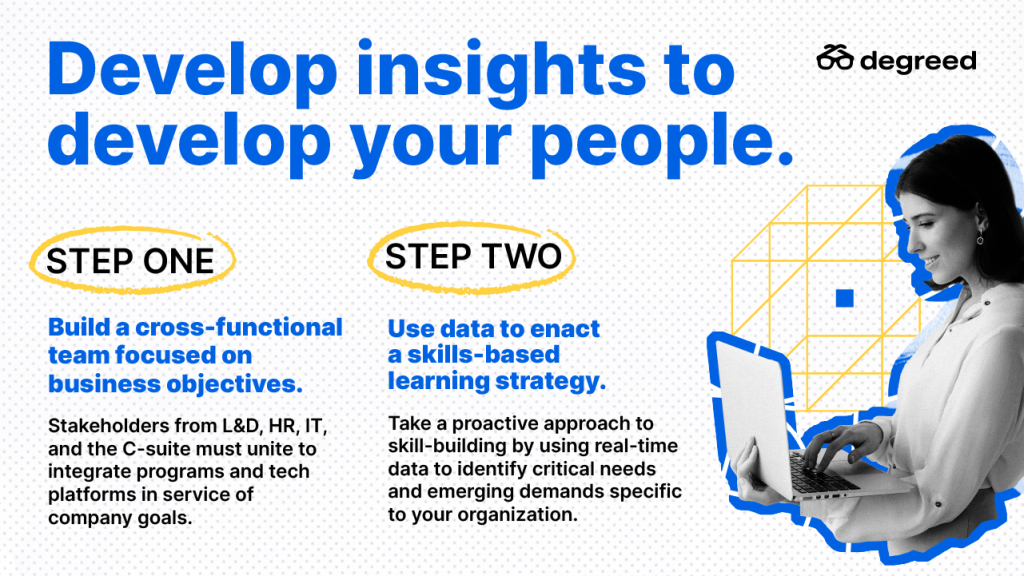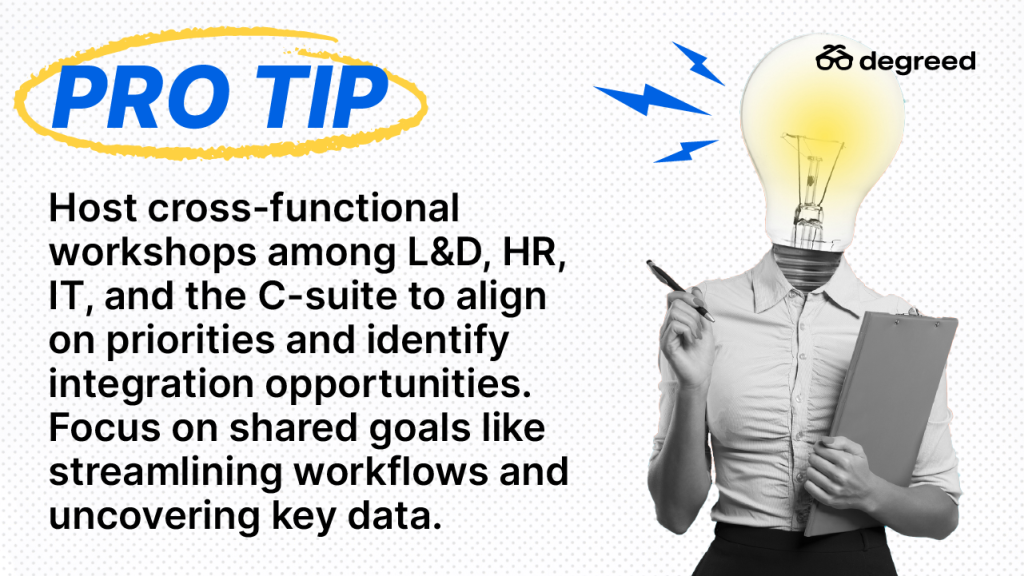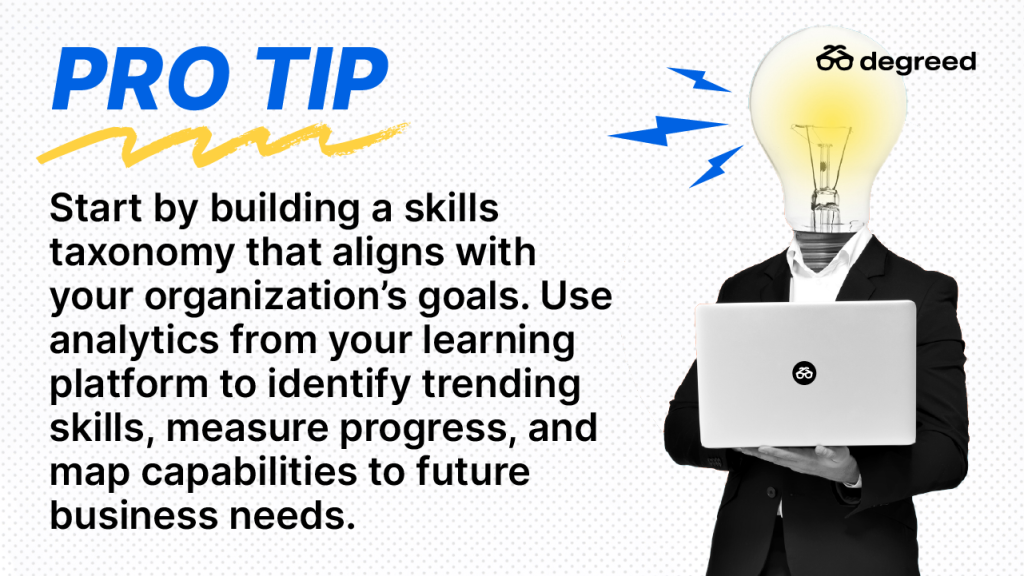The challenge is clear: Prepare your workforce to keep your company competitive, by ensuring your people have the right skills at the right time.
At most organizations, this requires breaking down silos. Indeed, upskilling and reskilling takes cross-functional teamwork—a meeting of the minds among HR, IT, the C-suite, and of course L&D.
Do this effectively and you’ll get the skill data and insights you need to drive big business impact.
“Every road trip is better with a copilot,” note the industry analysts at Deloitte. “High-performing organizations ensure the L&D function, leaders, and stakeholders are all accountable for a successful journey. They aren’t just along for the ride—the business understands the right questions to ask to improve the trip.”
Let’s take a closer look at two key steps you can take to promote cross-functional teamwork and bring powerful learning to life.

Step No. 1: Build a cross-functional team focused on business objectives.
If you’re a savvy business leader, you understand aligning agile and scalable workforce development priorities with the business is crucial.
So how can you get there? Making sense of learning and skill data is critical, because you can use that data to inform L&D decision-making.
But before you can turn insights from those juicy analytics into action, you and your stakeholders must come together to align programs and unify technologies.

Picture a global organization that integrates its learning, HCM, and talent marketplace platforms to streamline skills development. HR provided the direction, IT integrated the platforms to connect learning data across teams. And leadership supported the initiative because the desired outcomes were directly tied to strategic business goals.
This partnership allowed the organization to deliver personalized learning at scale, track ROI, and ensure the workforce stayed aligned with business needs.
Step No. 2: Embrace data and enact a skills-based learning strategy.
The best learning and technology strategies are guided by analytics. By understanding trends, skill gaps, and learning behaviors, your company can uncover actionable insights. Instead of guessing, you can take a proactive approach by using real-time data to identify emerging skill demands.
Imagine an IT department tasked with preparing an organization for AI adoption. By using skill data to assess current capabilities, IT can determine which employees need upskilling in areas like machine learning, automation, and AI ethics. This precision ensures that learning resources are allocated where they’ll have the most impact, while employees gain the confidence and expertise they need to lead innovation.

The Future of Your Workforce Strategy
For your company to compete in a world where technology and skills are constantly evolving, unifying learning systems and leveraging data are no longer optional—they’re essential. Cross-functional teamwork across HR, IT, L&D, and the C-suite ensures your organization’s learning strategy is flexible, responsive, and future focused.
Learn more.
Let’s chat about your skill-building strategy. Schedule a personalized one-on-one call with an expert at Degreed today.
Make skill data your business differentiator. Check out The Ultimate Skill Data Handbook.

